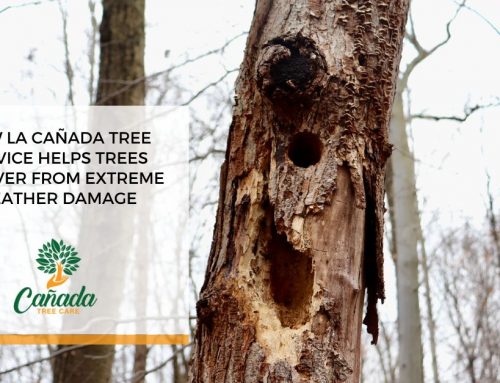Anyone involved in La Canada tree care will tell you that trees, while majestic and integral to the environment, can face structural issues that, if left unattended, may lead to failure and pose risks to property and safety. Vigilance in recognizing the signs of tree failure is paramount for early intervention. This guide explores the key indicators from the ground to the canopy, ensuring a comprehensive understanding of potential risks.
Tips From Local Experts in La Canada Tree Care
Starting At The Ground Floor
The foundation of a healthy tree begins below the surface. One of the earliest signs of tree trouble can be observed at the base. Look for signs of decay, including fungal growth, conks, or softwood. A compromised root system may lead to instability, and the presence of mushrooms at the base is often indicative of internal decay. Additionally, inspect the soil around the tree; heaving soil or visible roots may signal instability, requiring further examination. Proper root anchorage is essential for a tree’s stability, and any disruption to this foundation demands attention.
Failure Throughout The Structure
Tree failure is not always evident at a glance; sometimes, it manifests within the trunk and branches. Inspect the trunk for visible wounds, cracks, or areas of missing bark. Irregularities in the trunk, such as swelling or constrictions, can be indicators of internal issues. Any signs of a weakened or compromised trunk structure demand immediate attention, as it poses a significant risk of failure.
Likewise, branches can provide crucial insights. Dead or decaying branches, especially those hanging over structures or walkways, should be promptly pruned to prevent the risk of falling. Examine the branch attachments for signs of included bark, where the bark gets trapped between branches, creating a weak connection. These structural weaknesses can lead to limb failure during adverse weather conditions. Regular assessments of the trunk and branches are vital for identifying potential issues before they escalate.
Failure In The Canopy
The canopy, comprising the leaves and branches at the top of the tree, is another area where signs of failure may manifest. Sparse foliage, dieback, or premature leaf shedding can be indicative of underlying issues, such as pest infestation, disease, or stress. Observe the overall appearance of the canopy; a healthy tree should exhibit a balanced and symmetrical canopy. Asymmetry, leaning, or a noticeable change in the tree’s shape may suggest internal structural problems.
Inspect for hanging or dead branches within the canopy, as they pose a risk of falling. When trees are stressed or diseased, they may prioritize survival by shedding branches, signaling potential failure points. Any anomalies in the canopy should be investigated promptly to identify and address the root cause.
If you recognize any of the abovementioned signs in your own garden and think you need the assistance of a La Canada tree care company, then don’t hesitate to get in touch with the best in your area at Canada Tree Care. We are ready and waiting to solve any kind of tree-related issues that you might be having!







Leave A Comment